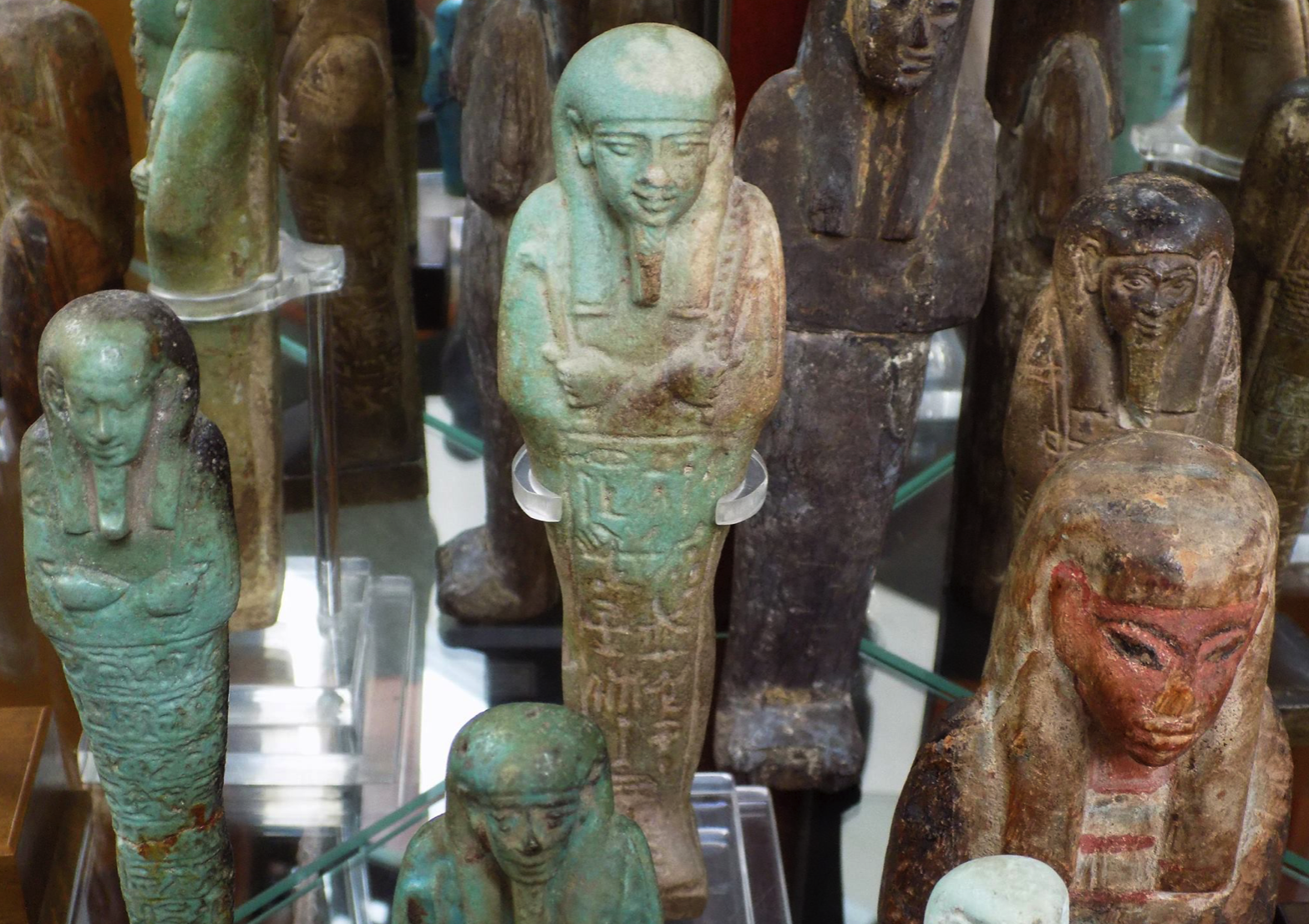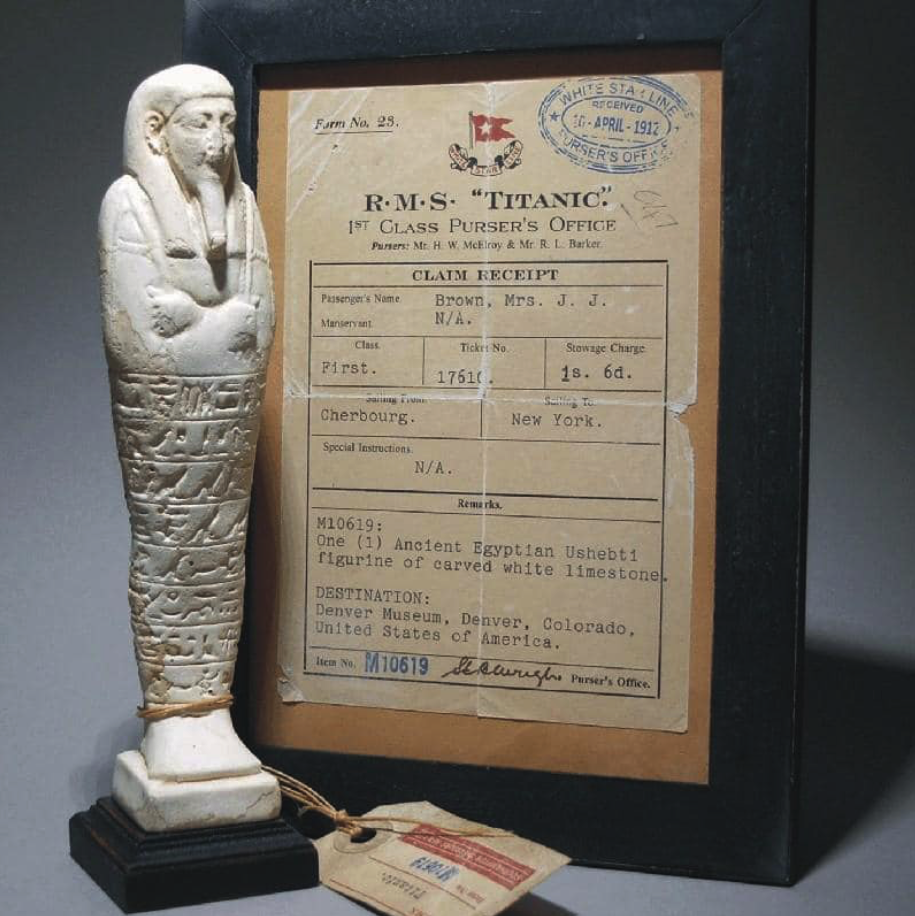Perhaps the most popular collectables from Ancient Egypt are small tomb figures known as shabtis or ushabtis, or more archaically as shawabtis. Typically between 5-30 cm in height, these funerary figures accompanied the deceased into the afterlife where they would perform the manual tasks expected of him or her after death. They are usually made of blue or green faience, but can be made of stone, pottery or wood. The quality of these figures varies tremendously according to the period and budget of the providers, and small simple examples can be acquired from a few tens of pounds upwards. Often shabtis are inscribed with the name of the deceased, and sometimes with his/her titles and the name of his/her mother, while more elaborate examples are inscribed with the shabti spell from Chapter 6 of the Book of the Dead - the ‘Spell for making an ushabti work (for a man) in the God’s Land.’ Thus shabtis often provide an emotive and tangible link to an actual person who died a very long time ago. Shabtis are commonly available on dealer's websites and through auction rooms and many collectors specialise in these iconic artefacts, not uncommonly becoming recognised experts in their own right.

Shabtis are iconic artefacts from ancient Egypt and offer a fascinating variety to the collector.
Much has been written about shabtis and we do not intend to repeat this information here, but rather list resources useful for shabti collectors.
There are several websites dedicated to shabtis. We highly recommend:
www.ushabtis.com
www.shabticollections.com
Both these websites provide a wealth of information for both beginner collectors and those with more advanced knowledge.
There is also an extensive literature to assist collectors. A detailed series of books documenting shabtis in private collections and museums has been produced by Glen Janes and can be ordered from:
www.shabtis.com
These books are expensive but are beautifully illustrated and contain a vast amount of information. They are highly recommended and will be an excellent investment for the collector.
Facebook is a platform where collectors both novice and expert can exchange information and increase their knowledge through membership of specialist groups. Specific groups devoted to shabtis are:
Shabtis - Ushabtis - Shawabtis
Ancient Egyptian shabtis
Shabtis, Amulets, Scarabs & Cylinders with names
Shabtis are best displayed standing upright and it is not uncommon to see shabtis mounted on perspex or wooden blocks. Shabtis mounted in this way look attractive but any form of adhesive attaching the figure to a block risks damage to the shabti. It is better if possible to use a form of mounting that holds the shabti upright but allows it to be safely removed. T-arm armature stands that have an upright with a soft metal "T" arm that bends and can be cut to fit around a shabti are ideal. These can be obtained from:
Art Display Essentials (USA)
Dauphin Museum Services (UK)
Art Display Essentials has more choice regarding size, are cheaper and the stands sturdier in our opinion. Dauphin has excellent customer service and in our experience very quick delivery, although the stands are more expensive and less study but are still functional.
Shabti copies are common tourist souvenirs found in Egyptian bazaars and are often listed on online auction sites, sometimes described as ancient, these can usually be easily recognised. However, more dangerous fakes exist on the market hence the need to buy from a reputable dealer or auction house. While paperwork relating to an artefact is usually to be welcomed, a prolific British forger named John Andrews specialised in shabtis (and other artefacts) with supporting fake documentation. Andrews' shabtis were mould made and often made of plaster.

A fake shabti made by John Andrews purporting to have been taken by a rescued passenger from the Titanic complete with forged Purser's Office note.